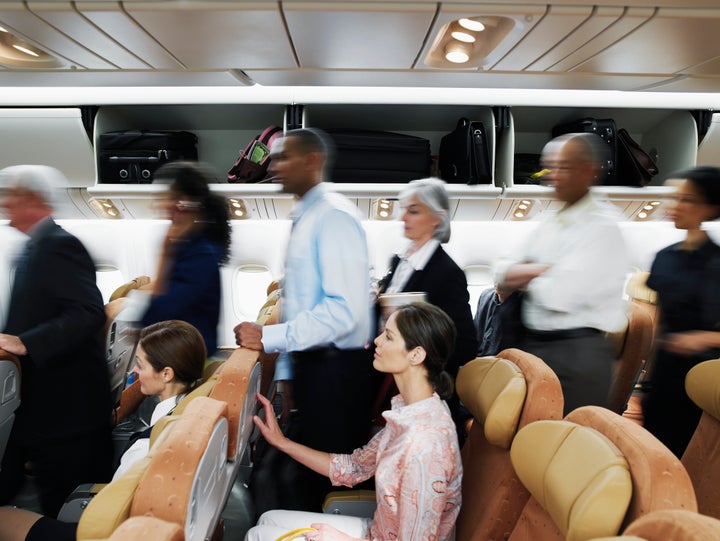If you’ve ever taken a flight, you know the chaos that often ensues after landing when the pilot turns off the “fasten seatbelt” sign. People are jumping to their feet, swinging their bags down and in some cases, even getting into altercations.
And of course, there are the “aisle lice.” This deplaning phenomenon is quite common, but it can be frustrating nonetheless.
Below, travel and etiquette experts break down what the term “aisle lice” means and what you should know about this behavior before your next flight.
What does ‘aisle lice’ refer to?
“‘Aisle lice’ is a term used to describe airline passengers who immediately stand up and cluster in the aisle as soon as the plane arrives at the gate, often before the seatbelt sign is turned off,” said Lauren Gumport, vice president of communications at Faye Travel Insurance.
It’s related to the concept of “gate lice,” the folks who crowd the gate area at the airport during the boarding process, well before their group number is called.
“Anyone who has been on a commercial flight in economy knows the cramped nature of deplaning,” said Katy Nastro, a spokesperson for the flight alert service Going. “Elbows in faces, bags coming from all angles in the overhead bins and of course, the impatient people who crowd the aisle. Regardless of seat assignment, some people will rush to the front of the aisle in an effort to deplane as fast as possible.”
Although aisle lice typically refers to those who refuse to patiently wait in their designated seat until their row’s turn to deplane, the term might also apply to passengers who stand and take up space in the aisle at other inopportune moments.
“So long as the attendants have finished their service, it is perfectly acceptable to stand or walk back and forth to stretch your legs. If there is beverage or meal service, you need to remain in your seat.” said Jodi R.R. Smith, the president of Mannersmith Etiquette Consulting.
“While generally used when referring to airplanes, aisle lice can also be found on trains, buses, subways, and even boats,” she added.
Thomas Barwick via Getty Images
What’s driving this phenomenon?
“In some cases, people are trying to make a tight connection, and they are likely the ones to rush ahead with an apology attached to provide context as to why they need to cut ahead,” Nastro said….
Click Here to Read the Full Original Article at Travel…
